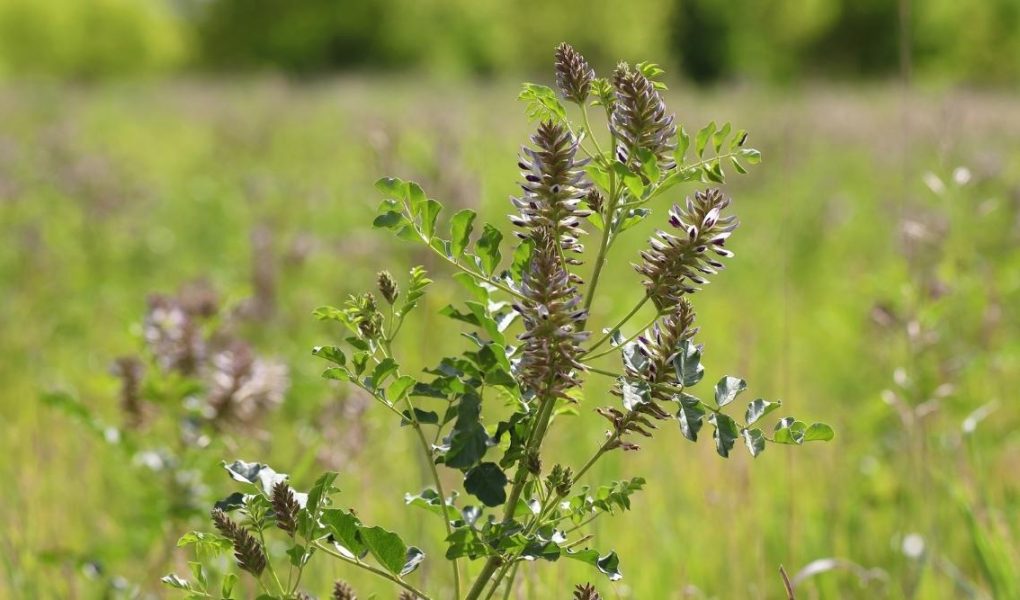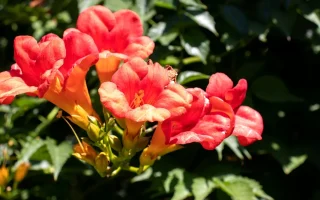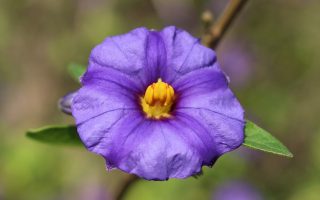kimzolciakwedding.com – Licorice root (Glycyrrhiza glabra) is a herb known for its distinct flavor and medicinal properties. Native to parts of Europe and Asia, licorice root has been utilized for thousands of years in traditional medicine, as well as in culinary applications. While the root itself is often the main focus of attention, the flower of the licorice plant also holds its own charm. With delicate, pea-like blooms, the licorice flower adds a touch of beauty to this historically significant herb. Alongside its aesthetic value, licorice root flowers contribute to the plant’s overall medicinal and ecological benefits.
Appearance and Characteristics
The licorice plant is a perennial herb that can grow between 3 to 6 feet tall. It features long, feathery leaves with multiple leaflets that are arranged alternately along the stem. The licorice root flower appears in late spring to early summer, and it is often found in clusters of small, tubular blooms.
The flowers of licorice are typically purple, lavender, or blue, with a characteristic shape resembling the pea family. Each individual flower has a pair of upright wings, a central keel, and a small banner petal, giving the flower a slightly asymmetric appearance. These flowers grow in loose clusters along long, slender spikes that emerge from the top of the plant.
Though the flower itself is not particularly large, its delicate nature and soft colors add a subtle charm to the overall appearance of the plant. Once pollinated, the flowers give way to small seed pods that contain several seeds, which can be harvested to propagate new plants.
Growing Conditions
Licorice root is a hardy plant that thrives in well-drained, sandy, or loamy soils. It requires a warm climate to grow optimally and can be found growing naturally in regions with temperate and subtropical climates. To grow licorice root and its flowers successfully, consider the following conditions:
- Light: Licorice plants prefer full sun to partial shade. A location that receives plenty of sunlight throughout the day will encourage healthy growth and abundant flowering.
- Soil: Well-draining, fertile soil is key to the growth of licorice plants. Loamy or sandy soils with a slightly acidic to neutral pH are ideal. Good drainage prevents root rot and helps the plant establish itself more successfully.
- Watering: Licorice plants prefer moderate watering. While they like consistent moisture, overwatering can cause root rot. It’s essential to allow the soil to dry out between waterings to avoid excess moisture around the roots.
- Temperature: Licorice plants thrive in warm conditions, typically in USDA hardiness zones 7 to 9. They are not frost-tolerant, so they should be grown in regions with mild winters or cultivated as annuals in colder climates.
- Humidity: Licorice root plants prefer moderate to low humidity levels. In areas with high humidity, it’s important to provide adequate air circulation to avoid fungal diseases.
Medicinal and Culinary Uses
Licorice root has a rich history as both a medicinal herb and a culinary ingredient. The root contains glycyrrhizin, a compound that has sweetening properties—about 50 times sweeter than sucrose—and is often used as a natural sweetener in food products and beverages.
In traditional medicine, licorice root has been used to treat a wide variety of conditions, including digestive issues, sore throats, respiratory ailments, and adrenal gland disorders. It is also known for its anti-inflammatory, antioxidant, and antiviral properties. The root can be consumed in several forms, including teas, capsules, extracts, or even as a flavoring agent in candy and beverages.
However, due to the powerful effects of glycyrrhizin, it is important to use licorice root with caution. Excessive consumption can lead to adverse health effects such as high blood pressure, potassium imbalance, and water retention.
While the root is the primary focus for medicinal and culinary uses, the flowers of the licorice plant also contribute to its overall effectiveness in supporting pollinator health and enhancing the plant’s resilience.
Care and Maintenance
Licorice root is a relatively low-maintenance plant, requiring only a few basic care steps to thrive:
- Fertilization: Licorice plants do not require frequent fertilization. If your soil is poor in nutrients, a light application of organic compost or slow-release fertilizer in the spring can help promote strong growth.
- Pruning: Pruning is not typically necessary for licorice root plants, but removing dead or damaged leaves and stems can help keep the plant looking tidy. After flowering, cut back any spent flower spikes to encourage new growth.
- Pests and Diseases: Licorice plants are generally pest-resistant, but they can occasionally be affected by aphids, root rot, or fungal infections if grown in overly damp conditions. Ensuring proper drainage and maintaining healthy soil will help prevent many of these issues.
Ecological Role and Pollination
The flowers of the licorice plant attract a variety of pollinators, including bees, butterflies, and hummingbirds. The nectar-rich blooms provide an essential food source for these beneficial insects, especially in early summer when other plants may not yet be in bloom.
As a legume, the licorice plant is also capable of fixing nitrogen in the soil, improving soil fertility and supporting the surrounding ecosystem. This makes it a valuable plant for crop rotation or companion planting in gardens.
Licorice Root in the Landscape
Licorice root can be grown as an ornamental plant in gardens, particularly in areas where full sun or partial shade is available. While it is not commonly used as a decorative flower in floral arrangements, its unique foliage and delicate flowers can be an attractive addition to herb gardens, cottage gardens, or wildflower meadows.
Licorice plants are also ideal for erosion control on slopes due to their deep root systems, which help stabilize the soil. Their ability to grow in less-than-ideal soil conditions also makes them an excellent choice for low-maintenance landscapes.
Conclusion
Licorice root flowers may not be as flashy as some other blooms, but their unique charm and valuable medicinal properties make them an excellent addition to both gardens and herbal apothecaries. Whether used for its ecological benefits, its contribution to pollinator health, or its historical uses in medicine and cuisine, the licorice plant proves to be a versatile and beneficial herb. By providing the right growing conditions and a little care, gardeners can enjoy both the beauty of the licorice root flower and the many benefits this plant brings to the landscape.



